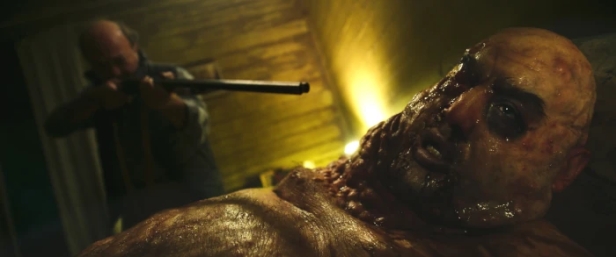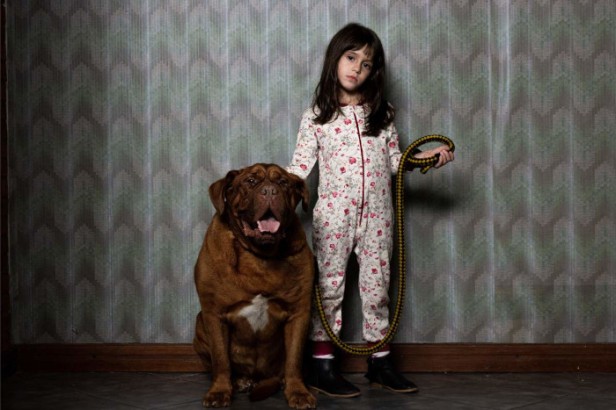Original title: Cuando acecha la maldad
Horror films of 2023 were dominated by possession and/or exorcism films, triggered by two sequels – David Gordon Green’s The Exorcist: Believer and Lee Cronin’s Evil Dead Rise. We had a grizzled Russell Crowe battling evil in The Pope’s Exorcist and another outing for the eponymous sister in The Nun II, and there were any number of standalone (for now) entries like 13 Exorcisms, Talk to Me, Late Night with the Devil and Godless: The Eastfield Exorcism and all the usual shot-in-someone’s-shed sludge polluting a streaming service near you. The best of them was the latest feature from Demián Rugna, the Argentine director of Aterrados/Terrified (2017) and one of the many contributors to the anthology film Satanic Hispanics (2022).
When Evil Lurks takes a refreshingly different approach to a subject that 2023 alone seemed determined to run into the ground, let alone the 50 years of post-The Exorcist (1973) that had gone before it. It repositions possession as an infectious disease and possession as a kind of social service administered by an increasingly exhausted and can’t-be-bothered bureaucracy. Along the way it plays with familiar zombie film motifs too and the result is a fast-paced apocalyptic drama with some detailed and finely wrought “world building.”

In the Argentine countryside, brothers Pedro (Ezequiel Rodriguez) and Jaime Yazurlo (Demián Salomon) find the bisected body a man in the woods and, in a nearby shack, the elderly María Elena (Isabel Quinteros) and her two sons who are in hiding. Her eldest, Uriel, is a “rotten”, alive but possessed by an as yet unborn demon that is waiting inside him to be freed into the world. The mutilated body outside was a “Cleaner”, a government-sanctioned agent sent to kill Uriel and prevent the demon from possessing others. Finding no help from the local authorities, Pedro and Jaime enlist the reluctant landowner Ruiz (Luis Ziembrowski) to help them dispose of Uriel by dumping miles away, on someone else’s land. But along the way, Uriel escapes and Ruiz returns home only to find that his pregnant wife Jimena (Desirée Salgueiro) believes that one of their goats has become possessed and is willing to take drastic action to contain the demon. Jaime and Pedro decide to get out of town, picking up their mother (Paula Rubinsztein) and Pedro’s sons Jair (Emilio Vodanovich) and Santino (Marcelo Michinaux) along the way. But the evil is following them. possessing the dog owned by Pedro’s ex-wife Sabrina (Virginia Garófalo) and her new husband Leonardo (Federico Liss) and causing it to attack their young daughter Vicky (Lucrecia Nirón Talazac). The brothers seek the help of a retired “Cleaner,” Mirta (Silvina Sabater), but the contagion is getting ever closer, finding a new home among one of the group…
Parallels with the 2020 COVID-19 pandemic are perhaps unavoidable – an infectious disease, authorities that are alternately useless and uncaring, people struggling with a complicated set of rules that no-one is entirely sure are working, all while trying to come to terms with a whole new way of living. But like the best satire, it’s subtle, Rugna keeping it bubbling away the surface, there if we want to see it, easy to dismiss if we don’t. The first half of the film is the best, plunging us headlong int a world that looks like ours but is subtly different, a world where evil is a virus, one already so well rooted that it’s in danger of being taken for granted. Local law enforcement are too weary of it now to respond and the “cleaners” sent by the government to contain possible outbreaks can take up to a year to respond. Rugna resorts to info-dumping in the latter half but there’s a lot to catch up on here.

For those not looking for a satirical look at the very real horrors of a recent pandemic, Rugna doesn’t skimp on crowd-pleasing gore set-pieces, and there are certainly some shocking scenes here – the pregnant woman taking an axe to her own head to ensure that she and her unborn child die before the contagion can take them; that moment sure to become a genre favourite, wherein a possessed dog savages a young girl; and the schoolroom full of possessed children encountered late in the film that evokes memories of the moral quandary that the protagonists of Narciso Ibáñez Serrador’s masterpiece ¿Quién puede matar a un niño?/Who Can Kill a Child? (1976). It was particularly pleasing to see a no-nonsense, unapologetically mean-spirited horror film played as straight as this, one that culminates in a devastating and unforgettable ending.
In most possession films, an exorcist or other church approved agent will turn up at the climax to ensure that something like order is restored to the world. Here we get an attempted exorcism early on and it only makes matters worse. These exorcisms are performed by government officials (“churches are dead,” we’re told) using arcane alchemical machinery that they don’t seem to fully understand the workings of themselves. The ending offers us little hope that the outbreak can be contained and there are warnings along the way (“it is near. It is everywhere”) that perhaps we never will. Those in search of a happy ending that will confirm that all the old certainties still hold true are likely to be disappointed.

So the people have to do it for themselves, struggling with a set of seven rules recounted by Grandma (which may or not be official advice) for dealing with the “rottens” that seems to make little intuitive sense – you can’t shoot them, you can’t shine electric lights on them, you need to stay away from animals and not touch anything that was close to the possessed, you must never hurt them or name them and one she doesn’t reveal. They’re a mix of solid good advice and what sounds like superstition and in the lack of a solid governmental response to the crisis, it appears to be all they have. So it’s hardly surprising that Pedro keeps on trying to do what he thinks is for the best but just keeps getting it wrong. What else was he supposed to do in the circumstances.
When Evil Lurks was the first Spanish language film co-produced by streaming platform Shudder and provided further proof that the horror genre seems be thriving in central and South America, a region known for far too long for Santo, Coffin Joe and little else. But over the last decade or so, we’ve seen more and more high quality genre films emerge from the continent, from the Mexican Vuelven/Tigers Are Not Afraid (2017) to the Brazilian As Boas Maneiras/Good Manners (2017), and from the Venezuelan La casa del fin de los tiempos/The House at the End of Time (2013) to the Uruguayan Un monstruo de mil cabezas/A Monster with a Thousand Heads (2015). Rugna remains one of the key players in the South American genre scene and one awaits his next film with considerable anticipation.
I’m going to try and see this one because your review is pretty convincing! I will say that lately when I watch the fan favorites suggested on the EOH Facebook page, they don’t hit right for me, films such as Host and Lake Mungo.
LikeLiked by 2 people